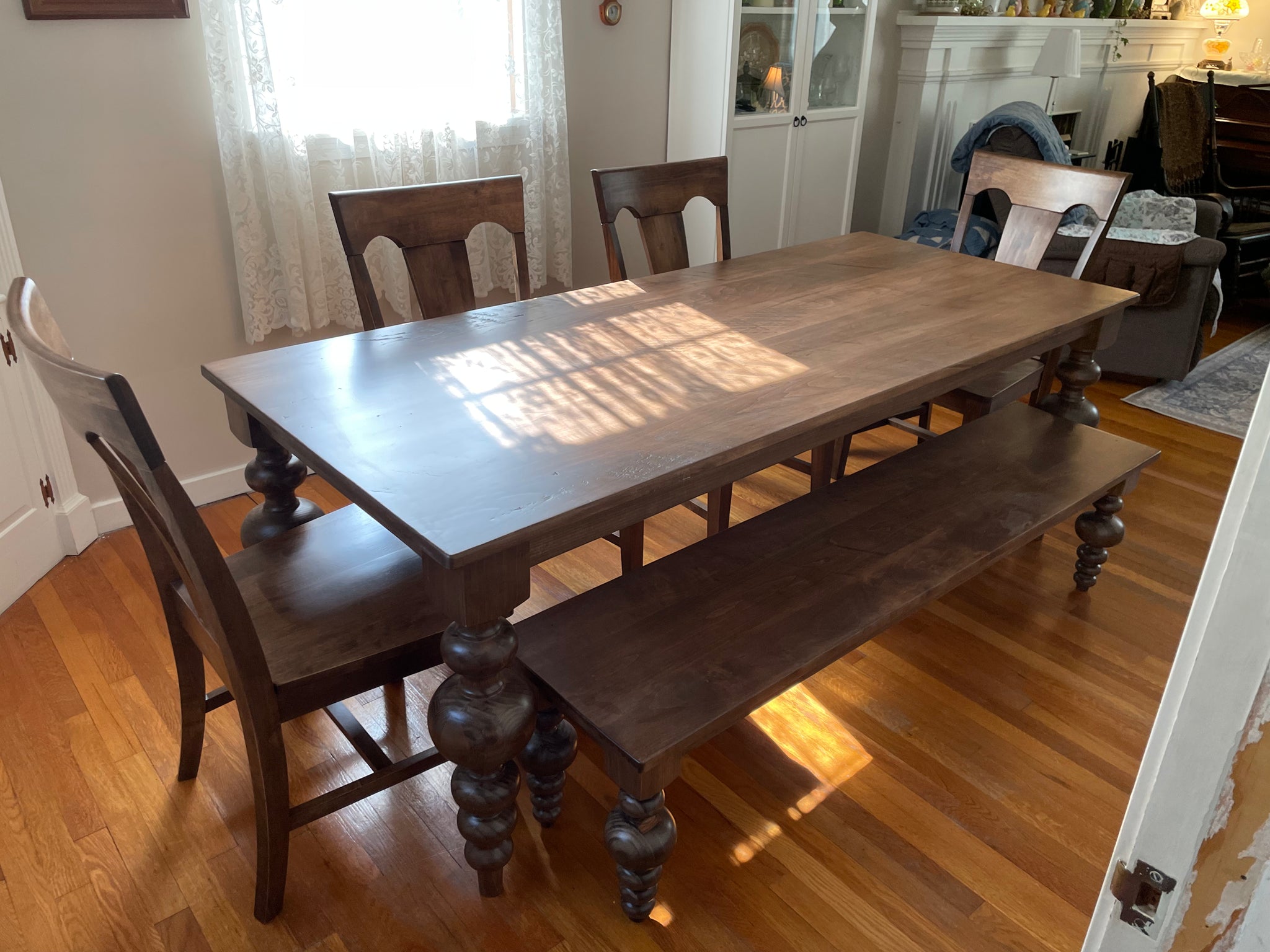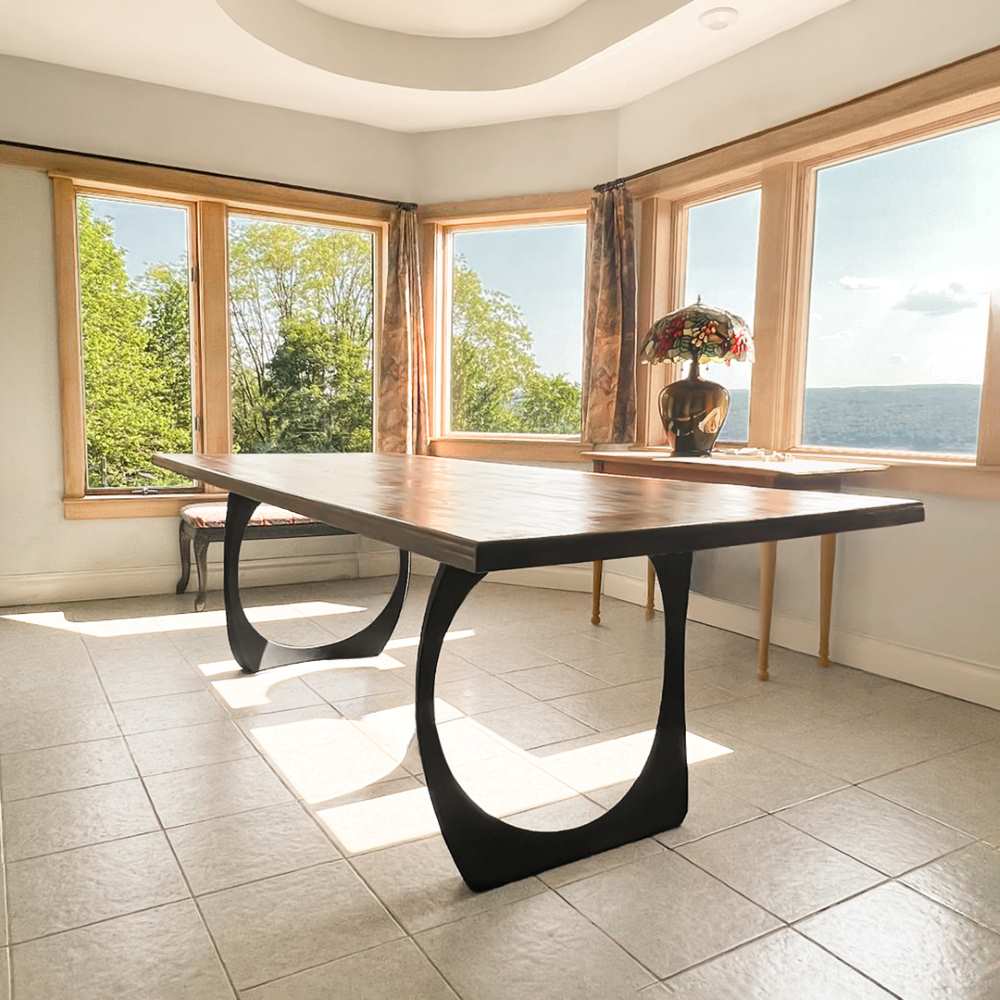Find the Ideal Dining Room Table Legs for Any Interior Design Style
Find the Ideal Dining Room Table Legs for Any Interior Design Style
Blog Article
From Conventional to Modern: Find the Suitable Dining Room Table Legs for Your Design
While classic designs such as cabriole and transformed legs evoke a feeling of ageless refinement, contemporary styles like hairpin and geometric choices offer an opportunity for striking visual rate of interest. As you consider these aspects, the question remains: how can you seamlessly incorporate these varied leg designs to develop a harmonious eating experience?
Comprehending Table Leg Styles
The selection of dining-room table leg styles can substantially affect both the appearances and capability of the space. Each leg design contributes distinct sensible functions and visual aspects, satisfying diverse style choices and use demands. Comprehending these designs is essential for picking the appropriate dining table that aligns with your overall indoor layout vision.
For circumstances, tapered legs offer a clean, timeless look that can enhance a space's sophistication, while pedestal bases offer security and optimize legroom, making them optimal for smaller spaces. Barrette legs, a characteristic of mid-century contemporary layout, present a commercial flair, enabling an airy, open feeling. Trestle legs stimulate rustic beauty, giving robust assistance and a feeling of timelessness.
Wooden legs can bring warmth and texture, whereas metal options typically convey a smooth, modern ambiance. Inevitably, comprehending table leg styles is necessary for creating a natural dining location that mirrors individual design while guaranteeing functionality and convenience.
Standard Table Leg Options
When picking dining room table legs, traditional choices frequently embody ageless elegance and craftsmanship. These designs show an abundant heritage and a commitment to top quality, making them ideal for those that value traditional aesthetics.
One of the most famous standard leg styles is the cabriole leg, identified by its graceful rounded shape. This style commonly features decorative carvings and is most frequently discovered in Queen Anne and Chippendale furniture. Another prominent choice is the turned leg, which flaunts a collection of smooth, rounded forms that offer a classic look while preserving stability.
Moreover, the straight leg, while basic, uses a basic and durable framework that can blend effortlessly with a range of tabletop styles. For those drawn to ornate detailing, claw-and-ball feet legs stimulate a sense of magnificence and can work as a stunning prime focus in any type of eating area.
Lastly, stand bases, although not strictly legs, offer an alternative typical alternative that enables for enough legroom and can be beautifully sculpted. Each of these conventional leg styles adds to the overall ambiance of an eating room, marrying feature with aesthetic charm.

Modern Table Leg Styles
Modern table leg styles offer a diverse array of designs that emphasize cutting-edge materials and clean lines. These styles usually prioritize performance while functioning as striking focal factors within a dining area. Minimalist aesthetics are prevalent, with legs crafted from materials such as steel, glass, and engineered timber, which add to a airy and contemporary feeling.
One prominent design is the hairpin leg, identified by its slim, conical structure that offers security without overwhelming the tabletop (dining room table legs). This design is typically located in mid-century contemporary furnishings and can easily enhance various table forms. One more fad is using geometric forms, where legs may take on asymmetrical or angular kinds, adding visual rate of interest and a touch of virtuosity

Mixing Styles for Special Rooms
Commonly, house owners look for to develop distinct eating rooms that show their individual design by blending numerous design elements. This technique permits the incorporation of varied appearances, leading to an unified yet distinctive environment. As an example, matching a rustic wood table with streamlined, contemporary metal legs can produce a captivating comparison that boosts the space's overall allure.
Furthermore, incorporating vintage table legs with contemporary table tops can evoke a sense of history while preserving a modern sensibility. Such mixes not just showcase private taste but additionally urge imagination, enabling house owners to curate a space that feels both individual and welcoming.
Color plays a crucial role in this blending procedure; choosing table legs that match or comparison with the existing shade plan can enhance aesthetic passion. Whitewashed legs can soften the daring of a dark table surface area, developing a well balanced visual.
Tips for Choosing the Right Legs
Picking the right table legs is vital for achieving both functionality and visual charm in your eating room. Begin by thinking about the total design of your space. Conventional settings take advantage of legs that include detailed carvings or turned styles, while modern areas might call for sleek, minimal styles.
Following, assess the height and stability of the legs. dining room table legs. Common table vary between 28 to 30 inches in elevation, so make certain the legs complement this measurement for convenience. In addition, durable materials, such as hardwood or metal, can enhance stability and long life
Evaluate the leg shape as well-- choices consist of right, tapered, or pedestal designs. Straight legs provide a timeless look, while tapered legs can add a touch of style. Pedestal bases offer ample legroom and are optimal for smaller rooms.
Final Thought
In recap, choosing the optimal eating area table legs needs mindful consideration of both conventional and contemporary styles. By harmonizing leg design, height, and material with the overall design, a natural and welcoming environment can be accomplished.
The selection of dining room table leg styles can substantially affect both the Discover More Here visual appeals and performance of the room. Inevitably, recognizing table leg styles is vital for developing a cohesive eating area that mirrors individual design while guaranteeing usefulness and convenience.One of the most renowned standard leg styles is the cabriole leg, characterized by its stylish curved shape. Straight legs offer a traditional appearance, This Site while tapered legs can include a touch of elegance.In summary, choosing the optimal eating space table legs needs mindful factor to consider of both traditional and contemporary styles.
Report this page